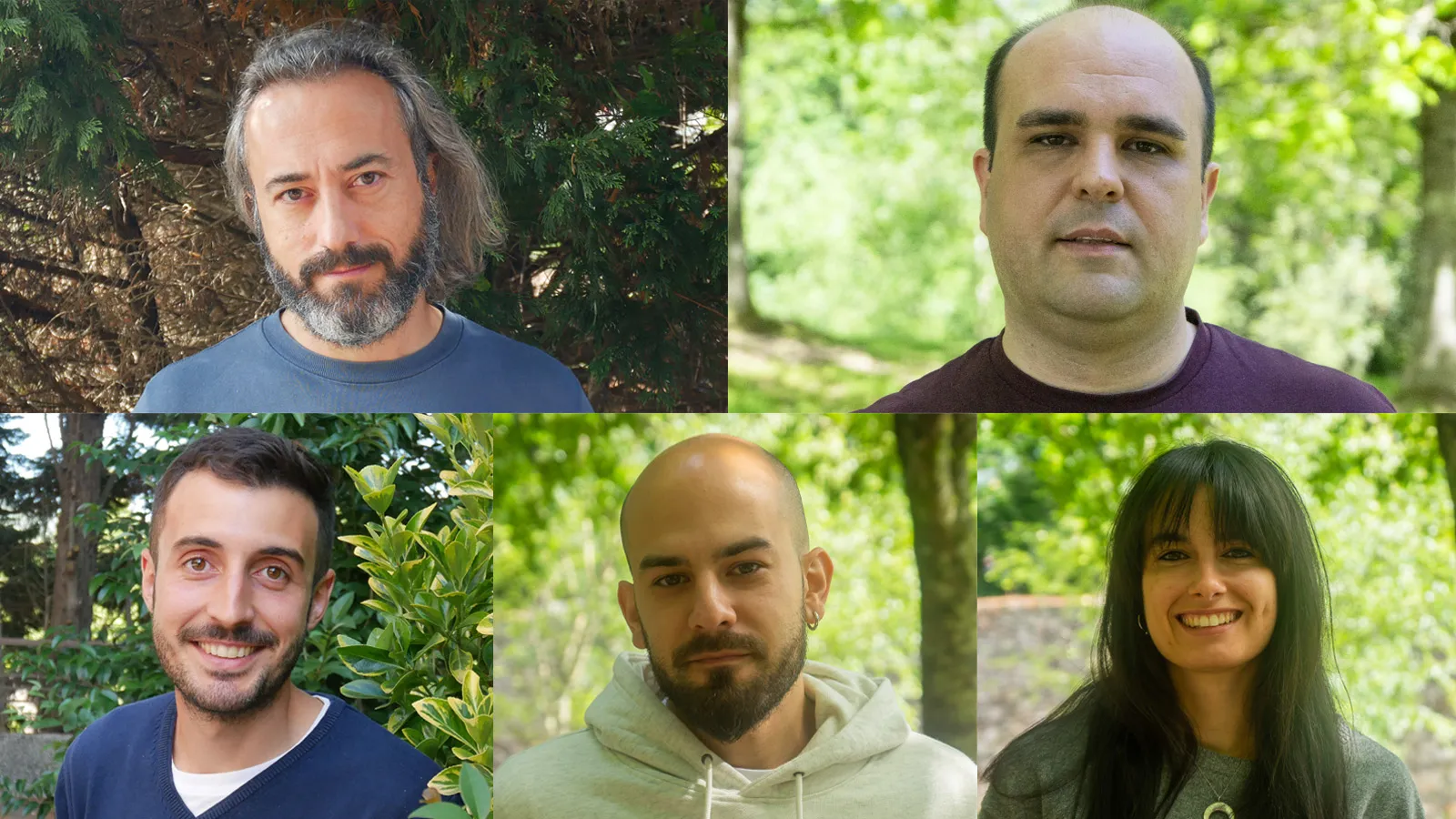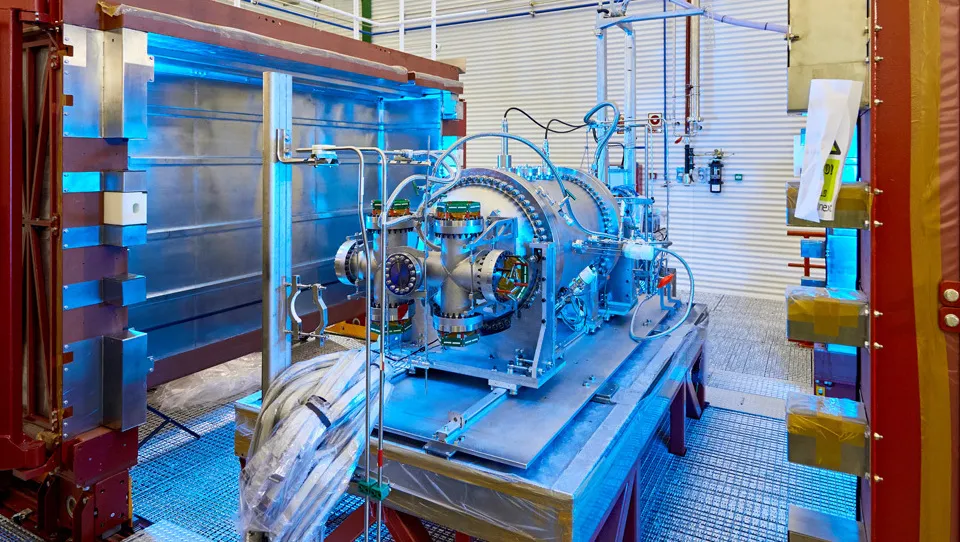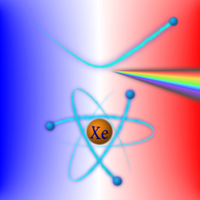‘Nature’ publica un traballo pioneiro sobre fisión nuclear no que participa o IGFAE



13.05.2022

Investigadores do Instituto Galego de Física de Altas Enerxías (IGFAE), a través da colaboración do experimento NEXT no Laboratorio Subterráneo de Canfranc (LSC), publicaron recentemente na revista Physical Review X a primeira observación experimental de radiación de freado ou bremsstrahlung neutro en xenón, seguindo a predición teórica ao longo de 5 ordes de magnitude. A demostración desta radiación resolve unha procura que se remonta a 2017 cando se observaron por primeira vez sinales de escintilación de orixe descoñecida e establece novos límites á sensibilidade de detectores como NEXT que lideran a procura de materia escura e neutrinos na actualidade empregando cámaras de proxección temporal (TPC, Time Projection Chambers).
Cando a radiación ionizante interactúa co xenón gasoso da cámara de NEXT, emítense grandes cantidades de luz ultravioleta en determinadas lonxitudes de onda (ao redor de 172 nm), o que constitúe o mecanismo de detección utilizado nas procuras de materia escura e estudos de física de neutrinos baseados en elementos nobres. Con todo, os investigadores viñan observando desde 2017 unha contribución adicional, cuxo orixe non conseguían identificar ata o de agora. Este novo tipo de luz causada pola dispersión de electróns en átomos neutros denomínase emisión de bremsstrahlung neutro ou de polarización, e é debida á interacción entre a partícula cargada e o átomo de xenon, a través do momento dipolar inducido deste último.
“A presenza de fotóns individuais en coincidencia coa interacción de radiación de alta enerxía ou ‘ruído’ procedente de rexións en teoría inactivas do detector, así como a presenza de electroluminiscencia a enerxías inferiores ás necesarias para excitar o medio suxerían a presenza dun mecanismo de radiación diferente do convencional”, explica o investigador do IGFAE Diego González Díaz, un dos autores deste traballo e quen propuxo e desenvolveu o experimento inicial. “Durante varios anos consideráronse estes fenómenos como independentes, ata que en decembro de 2019 realizamos un experimento coidadoso en colaboración coa Universidade de Coimbra e a Universidade de Aveiro para resolver o misterio”.
Un misterio resolvido
 Ademais de establecer a presenza desta escintilación nos actuais experimentos líderes na procura de materia escura e a orixe común dunha serie de observacións aparentemente disconexas por parte do experimento NEXT, unha das revelacións máis interesantes que se extraen deste traballo é que a emisión resultante é altamente independente da lonxitude de onda (algo análogo a outros procesos de tipo radiativo, como a radiación Cherenkov), o que ofrece un atractivo tecnolóxico que os investigadores están a estudar como explotar. En particular, ábrese a posibilidade de rexistrar a ionización primaria en detectores baseados en elementos nobres en fase líquida, usando para iso a radiación de freado producida nunha rexión electrificada. Isto permitiría aumentar a sensibilidade á enerxía dos eventos primarios nuns 4 ou 5 ordes de magnitude, sen a complexidade de ter que operar o detector en equilibrio líquido-vapor, como se fixo ata a data.
Ademais de establecer a presenza desta escintilación nos actuais experimentos líderes na procura de materia escura e a orixe común dunha serie de observacións aparentemente disconexas por parte do experimento NEXT, unha das revelacións máis interesantes que se extraen deste traballo é que a emisión resultante é altamente independente da lonxitude de onda (algo análogo a outros procesos de tipo radiativo, como a radiación Cherenkov), o que ofrece un atractivo tecnolóxico que os investigadores están a estudar como explotar. En particular, ábrese a posibilidade de rexistrar a ionización primaria en detectores baseados en elementos nobres en fase líquida, usando para iso a radiación de freado producida nunha rexión electrificada. Isto permitiría aumentar a sensibilidade á enerxía dos eventos primarios nuns 4 ou 5 ordes de magnitude, sen a complexidade de ter que operar o detector en equilibrio líquido-vapor, como se fixo ata a data.
“Na actualidade estamos a realizar medidas de escintilación absoluta noutros elementos nobres e moleculares para estudar a dependencia da emisión co tipo de medio, así como explorar os límites do marco teórico implementado por Pablo Amedo Martínez, estudante de doutoramento do IGFAE. Gustaríanos tamén emprender un estudo detallado do espectro de emisión, o que require modificacións importantes dos nosos dispositivos experimentais, que aínda estamos a avaliar”, conclúe Diego González Díaz.
NEXT é unha colaboración internacional liderada por grupos españois e estadounidenses. Actualmente, máis de 100 persoas de máis de 20 institucións participan no experimento. En España, ademais do IGFAE da Universidade de Santiago de Compostela (USC), atópanse o Centro de Física de Materiales (CFM), o Instituto de Física Corpuscular (IFIC), o Donostia International Physics Center (DIPC), a Universidad Autónoma De Madrid (UAM), a UniversitatdDe Girona, a Universidad del País Vasco, o Instituto de Instrumentación para Imagen Molecular (i3M – UPV), a Universidad de Oviedo e a Universidad de Zaragoza.
Referencias:
Neutral Bremsstrahlung Emission in Xenon Unveiled, C. A. O. Henriques et al. (NEXT Collaboration). Phys. Rev. X 12, 021005. DOI: https://journals.aps.org/prx/abstract/10.1103/PhysRevX.12.021005
Web do experimento NEXT: https://next.ific.uv.es/next/
Imaxe 1. Detector NEXT-White TPC, segunda fase do detector NEXT, no Laboratorio Subterráneo de Canfranc (LSC). Crédito: Javier Larrea